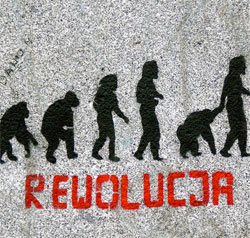 I haven’t watched MySpace or Digg evolve, however I can proudly say that I’ve witnessed the three other giants develop: Facebook, Twitter and LinkedIn – and moreover, I’ve been an early adopter.
I haven’t watched MySpace or Digg evolve, however I can proudly say that I’ve witnessed the three other giants develop: Facebook, Twitter and LinkedIn – and moreover, I’ve been an early adopter.
It’s fun to look back one day and remember how it has started and unfolded. It’s impossible to remember and describe everything that has happened in one post but at least we can watch their designs evolve. The three sites have much in common:
- At the beginning, the home page had to explain the concept;
- The sites are total mysteries for the outsiders (unregistered users);
- They are all user-generated and have been growing (in terms of features and options) together with the user base.
I have got nostalgic and collected the screenshots of Facebook, Twitter and LinkedIn home page designs through the years and compiled them into short presentations. Enjoy!
Update: Looks like Slideshare decreased the quality of the screenshots (they are a bit blurred in full-screen view), so please preview there and download the original presentations here: Facebook evolution, Twitter evolution and LinkedIn evolution (all .pptx files)
Table of Contents
1. Facebook
Facebook was founded in February 2004 by Mark Zuckerberg and his college roommates and fellow computer science students Dustin Moskovitz, Eduardo Saverin and Chris Hughes.
The website membership was initially limited to Harward and then expanded to the Ivy League, Stanford University and the Boston area.
Milestones:
- In 2004 Facebook was incorporated, moved its base of operations to Palo Alto, California and received its first investment from PayPal co-founder Peter Thiel;
- In 2005 the current domain facebook.com was purchased (it dropped “the”)
- In January 2009 Facebook was ranked as the most used social networking service by worldwide monthly active users, followed by MySpace (Compete.com)
- On September 26, 2006, Facebook was opened for everyone of age 13 and older with a valid email address.
- In October 2008, Facebook announced that, for the first time, it earned more money than it spent last quarter.
- In March 2011, more people visited Facebook than Google for the week (according to Hitwise)
2. LinkedIn
LinkedIn was launched by Reid Hoffman and founding team members from PayPal in May 2003 with strong focus on business networking for career development. LinkedIn’s CEO is Jeff Weiner, previously a Yahoo! Inc. employer.
Milestones:
- In November 2003 and October 2004, LinkedIn closed venture capital rounds of $4.7 million and $10 million
- In 2005 LinkedIn Premium services were launched. Premium services ranged from
- In March 2006 (just seven months after the introduction of premium services) LinkedIn announced it finally became profitable
- In October 2008 an “applications platform” was launched. The platform allowed selected third-party developers create application to embed other online services within a member’s profile page.
- In February 2008 the mobile-friendly version of the website was launched;
- In June 2010, LinkedIn a European headquarters in Dublin, Ireland was opened.
The LinkedIn home page has reflected the platform evolution:
3. Twitter
Twitter was launched in July 2006 by Jack Dorsey. The idea of “daylong brainstorming session” is said to have been inspired by Flickr (originally the project was called twttr) and the five-character length of American SMS short codes.
Milestones:
- 2007 on South by Southwest (SXSW) festival the usage of Twitter increased from 20,000 tweets per day to 60,000. At the event, for the first time, huge screens were installed to broadcast Twitter updates;
- On January 22, 2010 the first off-Earth Tweet was posted from the International Space Station by NASA astronaut T. J. Creamer
- 2010, a record was set during the 2010 FIFA World Cup when fans published 2,940 tweets per second
- September through October 2010, the company began rolling out “New Twitter”.
Noticed Any Similar Trends?
It seems that the modern trend requires that we give the option to join the site without any extra clicks (registration forms instead of large buttons). Besides, all the three designs have notably become minimal and laconic. In any case, it’s fun watching the huge sites evolve!
Note: History outlines from Wikipedia.org, most screenshots from Archive.org. Image credit
